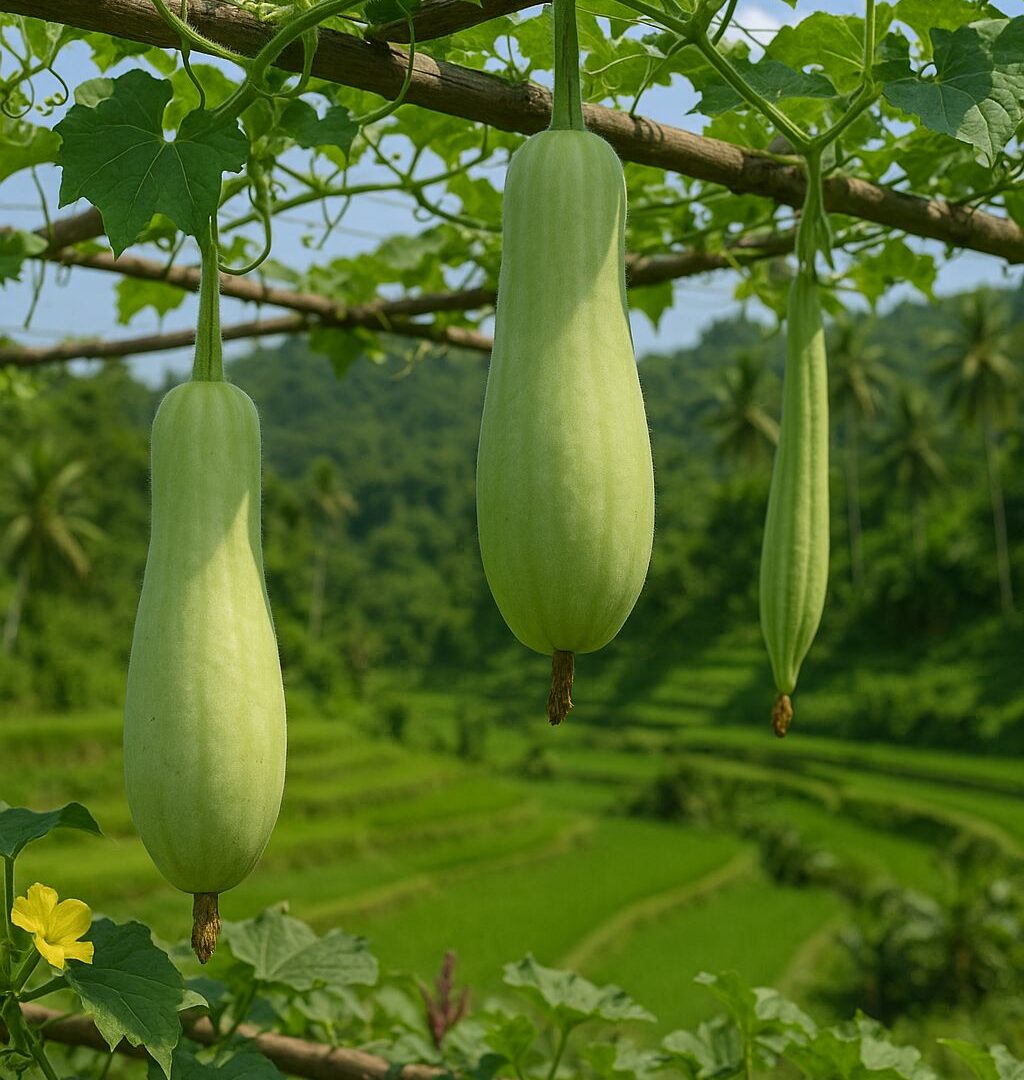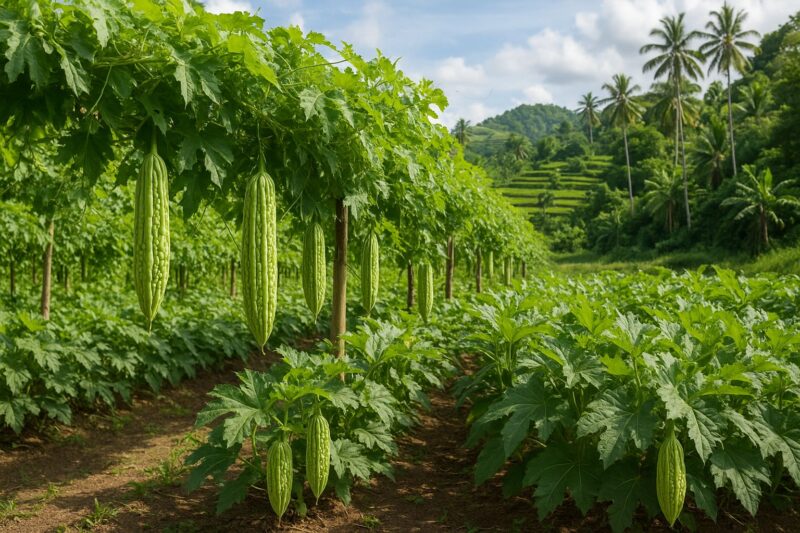Bottle gourd—upo—is a classic Filipino vegetable, its pale green, smooth-skinned fruits starring in ginisang upo and sinabawang upo. As a vigorous climber, upo needs sturdy supports, fertile soil, and consistent care to produce long, straight fruits. After climbing trellises in my Bulacan garden and trading tips with growers in Cavite’s lowlands and Benguet’s cooler plots, I’ve distilled a method that yields bountiful upo harvests across the archipelago.
Variety Selection
Choose straight-fruited hybrids like “Calabash Supreme” for uniform, market-ready gourds, or traditional landraces for rustic flavor and cost-free seed saving. In Bulacan, I grow a local strain known for 40–50 cm fruits and a hybrid that produces 60–70 cm gourds with thinner skin. Upland gardens often favor shorter, thicker types that handle cool nights without frost damage.
Soil Preparation
Upo thrives in deep, loose loam rich in organic matter. In clay-rich beds—common in Bulacan—I dig in two wheelbarrows of homemade compost per ten square meters and a handful of rice hull charcoal for aeration. Sandy coastal soils—like in Samar—benefit from aged goat manure or coconut coir to retain moisture. Aim for pH 6.0–6.8; if acidity is high, apply a light dressing of dolomite lime pre-planting.
Support Structures
As a heavy vine, upo demands trellising. I use A-frames made of bamboo poles set one meter apart, laced with sturdy twine. Overhead netting works well for containers or rooftop setups. Position supports east-west so vines receive morning light and avoid scorching afternoon sun. Gently guide tendrils onto the frame as shoots reach 30 cm.
Sowing and Timing
In lowlands, sow seeds at the onset of rains—June to July—directly at the base of trellises. In uplands, plant as early as April. Soak seeds overnight to hasten germination, then plant 3 cm deep, spacing holes 100 cm apart. Cover lightly and water gently. Germination occurs in 7–10 days at 25–30 °C.
Watering and Mulching
Consistent moisture promotes straight, tender gourds. Water deeply each morning—wetting soil 15 cm down—and allow the surface to dry slightly by evening. Mulch with rice straw to conserve moisture, suppress weeds, and moderate soil temperature.
Feeding and Side-Dressing
At planting, mix a handful of compost and a teaspoon of bone meal into each hole for phosphorus. When vines reach one meter—about six weeks later—I side-dress with decomposed chicken manure or compost tea at the drip line to support heavy fruit set. Avoid excess nitrogen, which encourages vines over gourds.
Pest and Disease Management
Upo faces few pests. Aphids on new shoots respond to neem-soap sprays. Squash vine borers can tunnel stems; wrap base of each vine with aluminum foil as a simple barrier. Powdery mildew may appear in humid months; prune crowded foliage and improve airflow to halt its spread.
Harvesting
Harvest young gourds when 25–40 cm long—often 60–75 days after sowing—while skin is smooth and seeds remain immature. Twist fruits gently or cut with a sharp knife, leaving a short stem to prevent moisture loss. Frequent picking—every 3–4 days—encourages continuous flowering and fruiting.
Case Study
A Cavite cooperative trellised upo vines above rows of peanuts, using intercropping to maximize space. The peanuts enriched the soil with nitrogen, while the upo vines provided shade that reduced water stress. Together, they achieved higher overall yields than monocropped plots.
Whether you cultivate upo in open fields, raised beds, or rooftop planters, mastering variety choice, soil health, trellising, timing, moisture, feeding, and simple pest checks will bring you crisp, tender bottle gourds across the Philippines. With minimal fuss, you’ll enjoy upo harvests from kinilaw to tinola, season after season.
I’m open for consulting and speaking opportunities on sustainable vegetable production nationwide. Let’s grow together.
#Upo #BottleGourd #PhilippineFarming #SustainableAgriculture #UrbanGardening #ConsultingAvailable #SpeakingOpportunities




